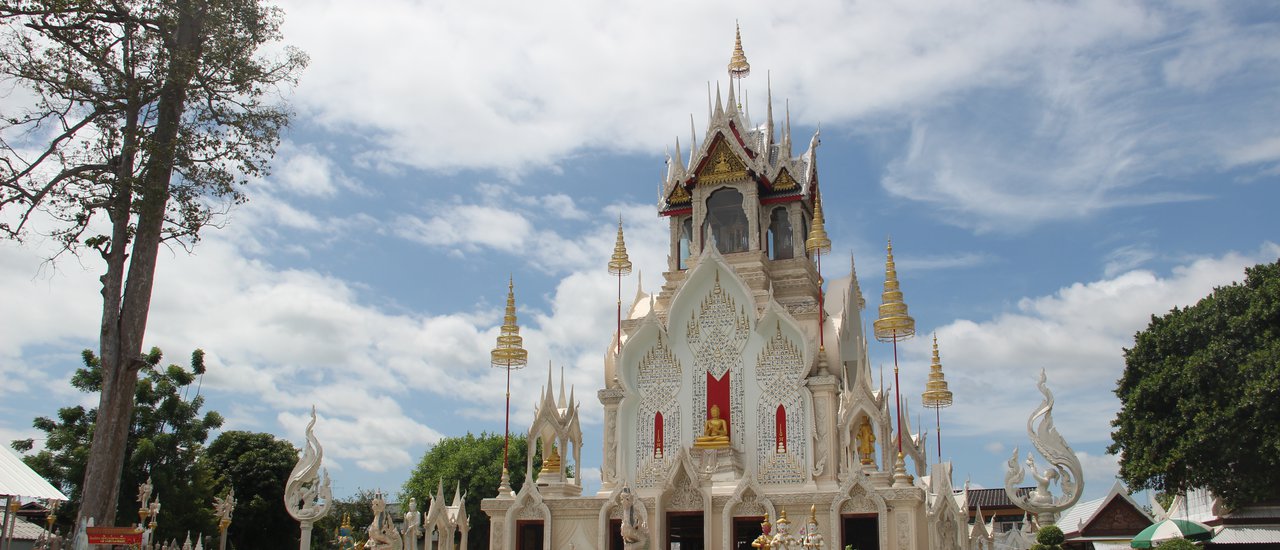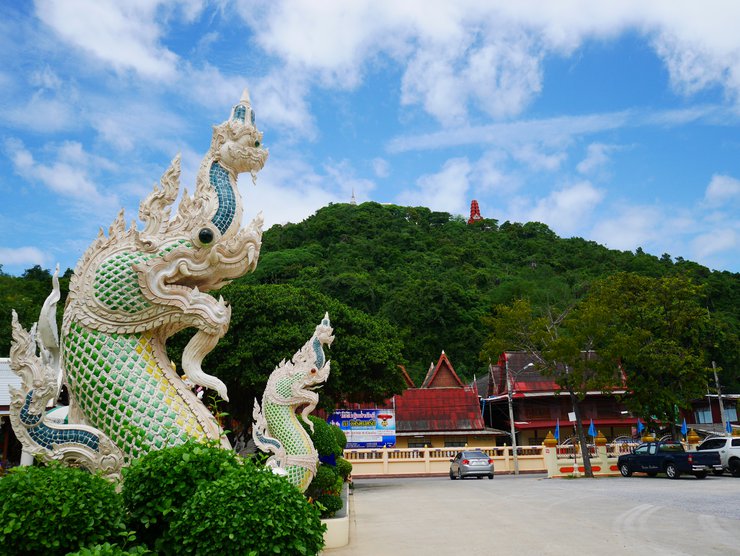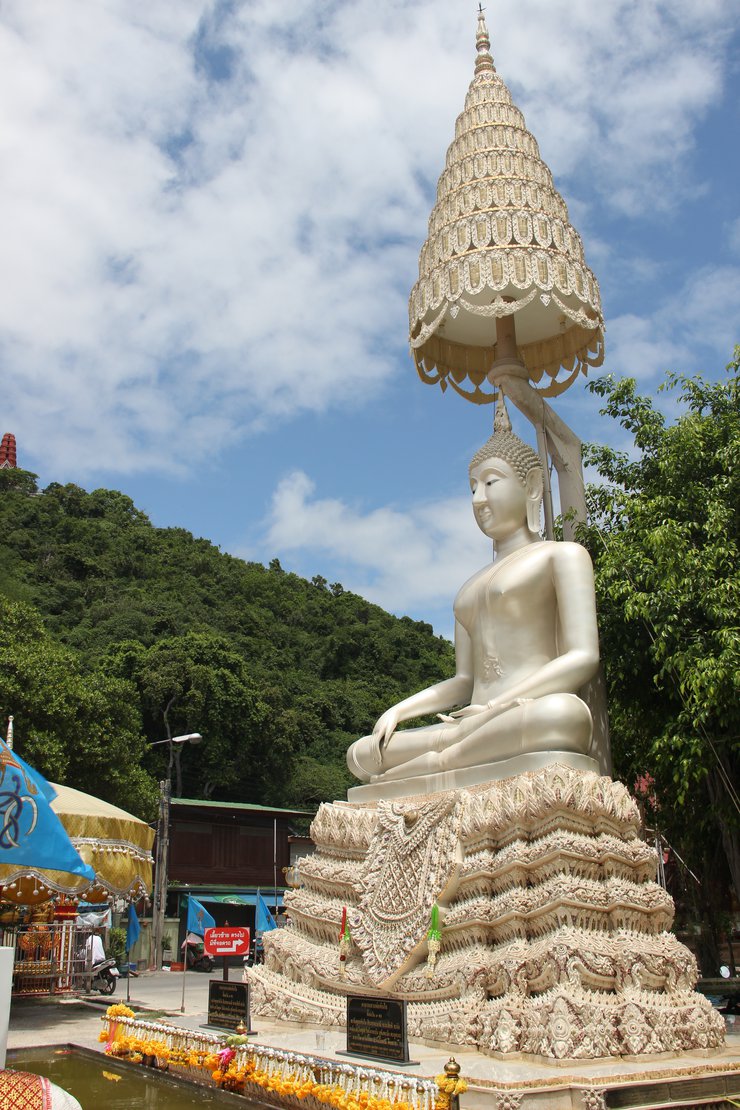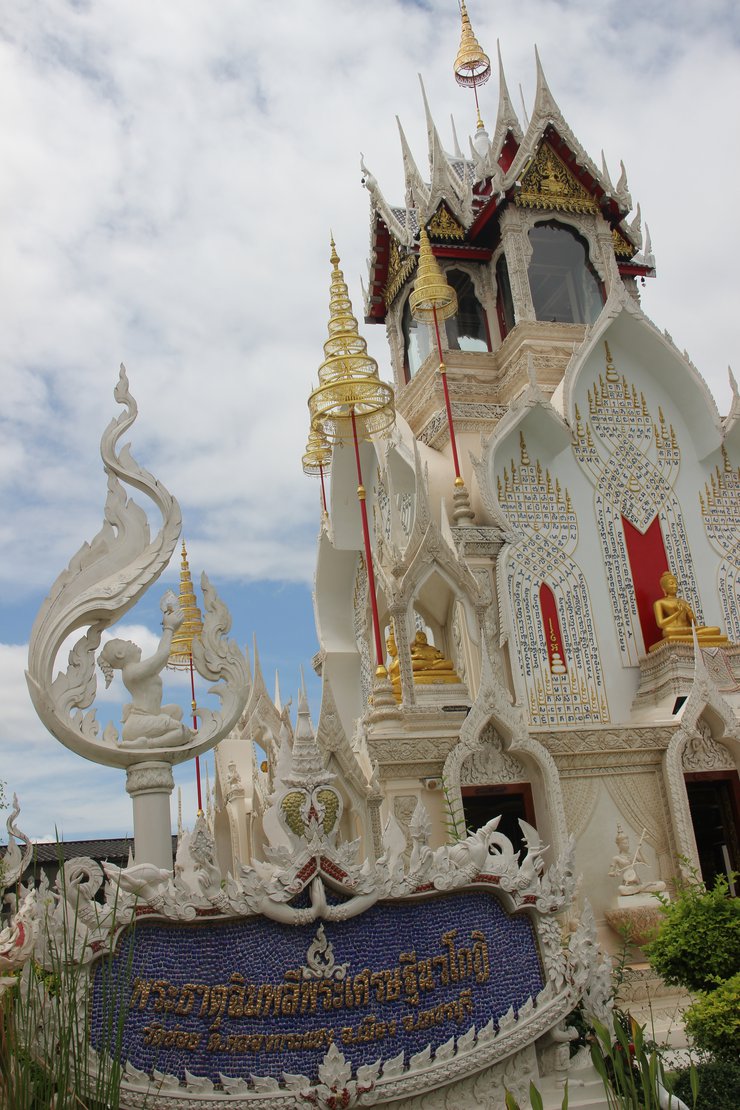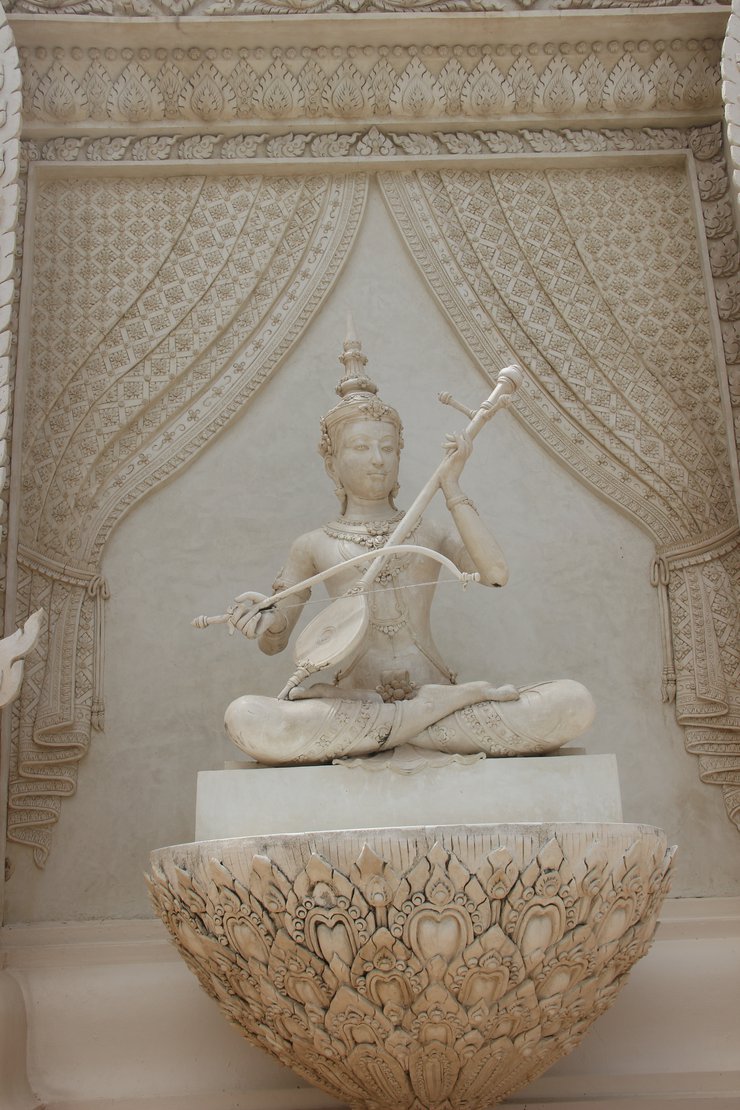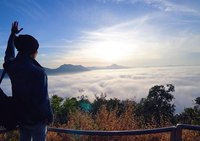The intricate carvings on the temple door in the LINE group chat sparked a sudden urge to return to Phetchaburi. While the province is familiar, frequent business trips have often led to hurried visits without much exploration. However, the image of the door reignited a long-forgotten passion for uncovering the hidden gems of Phetchaburi. It's time to delve deeper into the city's rich history and cultural treasures, moving beyond the routine and rediscovering its captivating essence. From now on, a renewed focus on details and a deeper appreciation for the city's stories will guide my journey. Today, the path leads back to Wat Khoi.
Phetchaburi, not far from Bangkok, takes about 2-3 hours to travel, depending on where you start. You can go via Nakhon Pathom, Ratchaburi, or Rama 2 Road, passing Samut Songkhram and Samut Sakhon, entering Wang Manao intersection, passing Khao Yoi district. When approaching the city center, there will be a bypass for those traveling south to Cha-am and Hua Hin. However, for Wat Khoi, it is better to use the route into the city. Pass the first traffic light intersection and turn right. A little further, you will find the second traffic light intersection (in front of the Khao Wang entrance). Drive straight ahead on a small 2-lane road. On the left-hand side will be old wooden shophouses and residences, while on the right-hand side will be the front of Khao Wang. Drive straight for about 200-300 meters, and you will reach the temple with a yellow wall. The temple is on the left-hand side, with two entrances and ample parking space.
A photograph taken from inside the temple.

This angle offers a view of Khao Wang and a traditional Thai house with a red roof.

The history of this temple remains shrouded in mystery, with no definitive records of its construction or founder. However, based on available evidence, it is estimated to have been built during the late Ayutthaya period. Initially, the temple housed around ten monks, with the local abbot serving as its head. The temple's most revered treasure is the Phra Phuttha Setthimongkhon, the principal Buddha image, which holds immense significance for the people of Phetchaburi.
The principal Buddha statue, enshrined within the building of Phra That Chim Phli Phra Setthi Nawakoti, is crafted entirely from silver. It rests upon a sumptuously decorated base, adorned with intricate benjarong porcelain and exquisite stuccowork. Flanking the main statue are figures of Phra Sivali and Phra Setthi Nawakoti. Above, the ceiling features intricate wooden carvings in teak, depicting the four cardinal directions and embellished with gold leaf. A five-tiered umbrella crowns the principal Buddha statue.


Ornamental stucco motifs adorn the base of the chukchi, embellished with benjarong decorations.


The interior walls of this building are made of teak wood. The ceiling is adorned with intricately carved light fixtures. The doors and windows are decorated with gold leaf patterns depicting scenes from the life of Buddha.






Exterior of the building
The white, multi-tiered spire of the Phra That Chim Plee Phra Setthi Nawakoti temple, adorned with nine umbrellas, is a testament to the artistry of the craftsmen of Phetchaburi, known as the "Ten Groups." This architectural masterpiece, built in 2005, embodies the devotion of Buddhists and elevates the temple to the status of a "Buddhist Art Site." The concept for the temple originated in 2005 when a layman, who later became known as Phra Wacharawit Siripanno, envisioned a heavenly palace depicted on a Chim Plee talisman cloth. This vision inspired the construction of the temple, which houses a relic of the Buddha. The square-shaped building is adorned with patterns resembling the talisman cloth, symbolizing the realization of the original vision. Four Buddha statues stand guard at the four cardinal directions. The temple, with its three floors, reaches a height of 27 meters from base to spire. The top floor houses the relic, while the two lower floors are adorned with stucco reliefs.



The ground floor of the building is adorned with stucco sculptures of various deities, including the eight deities playing Thai musical instruments in elegant postures, such as plucking, strumming, striking, and blowing, along with intricate and beautiful accompanying patterns.




Left-Right Side Date

Adorned with stucco art depicting the story of the Great Vessantara Jataka.




The sentence is already in English and does not require translation.




The area surrounding the temple is adorned with a diverse array of stucco sculptures.















A corner of the Goddess of Mercy


There are flower gardens and greenery.









Conclusion
After spending a considerable amount of time at the temple, we slowly walked around, admiring the scenery, taking pictures, and reciting prayers and making wishes to the main Buddha statue. Prayer texts were provided for our convenience. We took the opportunity to appreciate the beauty and artistry of the temple. Upon returning home, we conducted further research to learn more about the history and significance of Wat Khoy. This information has enriched our understanding of the temple we visited today.
One of the recommended dishes is "Khanom Jeen Tod Mun", a signature dish of Phetchaburi. There is a restaurant called "Nuch" located opposite the temple. I tried to visit, but it was closed on the day I went (closed on Wednesdays and Thursdays), so I was unable to try it.
That's all I have to share for now.
enjoyinglife
Tuesday, October 8, 2024 11:32 AM

